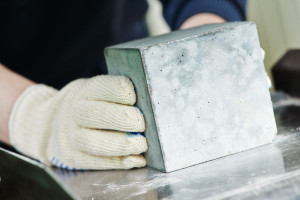 Concrete is one of the most useful construction materials. It’s durable, versatile and cheap to produce. As a result, you can find concrete as a major part of just about every structural engineering project in the world.
Concrete is one of the most useful construction materials. It’s durable, versatile and cheap to produce. As a result, you can find concrete as a major part of just about every structural engineering project in the world.
Concrete used in structural engineering today is composed of fine and coarse aggregate material, like sand and gravel, bonded with fluid cement that dries and hardens over time. It’s been around for over 100 years, but other forms of concrete have been used in structural engineering projects since ancient times. The Colosseum of Rome is made largely of concrete.
But like with everything these days, there are exciting new developments in the production as well as the composition of concrete that are going to make it even more versatile, useful and environmentally friendly.
Production
One criticism of concrete is that producing every ton of it releases an equal mass of carbon dioxide. That’s changing, fast. Use of alternative energy sources reduces CO2 output. By adopting new processes and new materials, some concrete manufacturers claim they’ve reduced CO2 release by as much as 30 percent.
Installation
Adding sensors to concrete mixers and other equipment allows builders and structural engineering professionals to monitor the machines’ mixing rate, temperature and other settings. When something goes out of range, the sensor can send an alert to a phone or other device. Early warning can reduce downtime in building, and save on maintenance and repair costs.
Ultra-High Performance Concrete
Known as UHPC, this new class of extremely strong and durable concrete is composed of 25 percent fibers and additives.
Fibers can include polyester and fiberglass in addition to the traditional steel rebars with which most people are familiar.
New minerals and chemicals added to the mix also make UHPC more flexible and ductile than traditional concrete, and more resistant to moisture, salt and chemical damage.
While it’s more expensive than traditional concrete to produce, some estimate that UHPC could last four times as long, reducing maintenance, repair and replacement costs significantly.
Electronically conductive concrete
Mixing carbon fiber into concrete makes it able to conduct an electrical current. The other components create electrical resistance, which makes heat. The result is an application of both electrical and structural engineering.
Researchers in Iowa are experimenting to see how well this property can keep surfaces clear of snow and ice. The Des Moines International Airport tested concrete slabs on its runways. The slabs were composed of two layers: the lower one was regular concrete, and the top the conductive type with the carbon fiber mix. In between were electrodes the width of the slabs, wired to the airport’s power supply.
In tests, the heated slabs were able to quickly melt snow and ice, drying the runway. The airport authority conducting the test, in partnership with the Federal Aviation Administration, is looking at reducing slips and falls on the runways, and avoiding any circumstances that would lead to aircraft skidding or slipping beyond the runway. So far, results look promising. While the electricity costs about 19 cents per square meter and conductive concrete is more expensive to install than regular concrete, it leads to savings on plowing, de-icing chemicals and treatment of run-off water.
The Iowa Department of Transportation and Iowa State University are also testing conductive concrete in a three-year study to determine its viability in making highways clearer, dryer and safer in the winter. Their initial studies indicate that the material would be 50 percent more to install than regular concrete, but like the Des Moines International Airport, it would save on plowing and lead to fewer accidents.
New horizons in structural engineering
These are just a few of the exciting new developments in something many consider a flat, gray and dull subject. But the overall market for concrete is expected to grow steadily through 2023 for infrastructure repair, the development of smart cities and new applications for new types of concrete.
If you’re curious about how new concrete can benefit your projects, talk to one of our structural engineering experts at McNeil Engineering.








